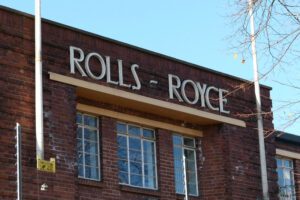A strategically vital British manufacturer teetering on the brink, thousands of jobs in jeopardy, and a government reluctant to intervene. It may sound like the story of British Steel in 2025—but more than fifty years ago, the same narrative played out with another great British name: Rolls-Royce.
In the early 1970s, the luxury car and aerospace firm—then one of Britain’s largest employers—was facing financial collapse, largely due to cost overruns on the RB211 engine contract with US aerospace firm Lockheed. Despite knowing that the project’s schedule and budget were unrealistic, the company pushed forward, encouraged by the then technology minister Tony Benn.
By early 1971, with development costs nearly double the original estimates and government support drying up, Rolls-Royce entered receivership. The Conservative government under Edward Heath, just months into office and ideologically opposed to state interference, was forced to act. It nationalised the engine-making part of the company to prevent the collapse of a business deemed essential to the UK’s defence, exports, and prestige.
Newspapers at the time praised the government’s pragmatism: “A new government has not been blooded until it has discovered that the national interest is more important than its own political preference or prestige.”
That sentiment rings true again today, as Sir Keir Starmer’s government takes emergency action to keep British Steel’s Scunthorpe plant running. But if ministers are looking for a precedent that shows nationalisation can work—if done with discipline and strategic foresight—they could do worse than study the Rolls-Royce playbook.
Heath’s rescue was not a doctrinaire nationalisation. Rolls-Royce (1971) was structured as a private company, slimmed down and positioned for re-privatisation. As Heath later reflected in his memoirs:
“The government’s actions had avoided a massive wave of redundancies, safeguarded our defence and international interests, and put the company on a secure long-term footing.”
Support even came from an unlikely ally—President Nixon. Aware of the implications for the global supply chain, he persuaded the US Congress to refinance the Lockheed contract, recognising the importance of preserving Anglo-American industrial cooperation.
A key part of the turnaround was the return of legendary engineer Sir Stanley Hooker, who revived the troubled RB211 engine project. Whether newly appointed interim executives Allan Bell and Lisa Coulson can replicate such a feat at British Steel remains to be seen.
Of course, the parallels have limits. Rolls-Royce in 1971 was a technological leader and a major defence supplier. British Steel, by contrast, has been plagued by years of underinvestment, volatile commodity pricing, and crippling energy costs—compounded now by President Trump’s aggressive tariffs on imported steel.
But the core question remains the same: when a strategically important industry is in freefall, can a targeted form of nationalisation stabilise and ultimately renew it?
There are reasons to be cautious. The Department for Business and Trade, now tasked with oversight, has little recent track record in managing nationalised assets beyond the smaller Sheffield Forgemasters, acquired in 2021 to protect naval supply chains. British Steel is a far more complex undertaking—larger, costlier, and more politically sensitive.
Energy costs remain one of the thorniest issues. Unless the government addresses the systemic pricing disadvantage faced by UK heavy industry compared to its European and global peers, any rescue risks being little more than a short-term fix.
Yet there is more than British Steel’s future riding on this decision. Calls are growing louder for other failing utilities—most notably Thames Water—to be brought into public ownership. If the British Steel intervention falters, the case for wider strategic nationalisations could be irreparably damaged.
The story of Rolls-Royce reminds us that nationalisation need not be a dead end. With a clear structure, skilled leadership, and international collaboration, a failing company can be turned around. The lesson for Starmer’s government is that the success of such interventions rests not on ideology, but execution.

















